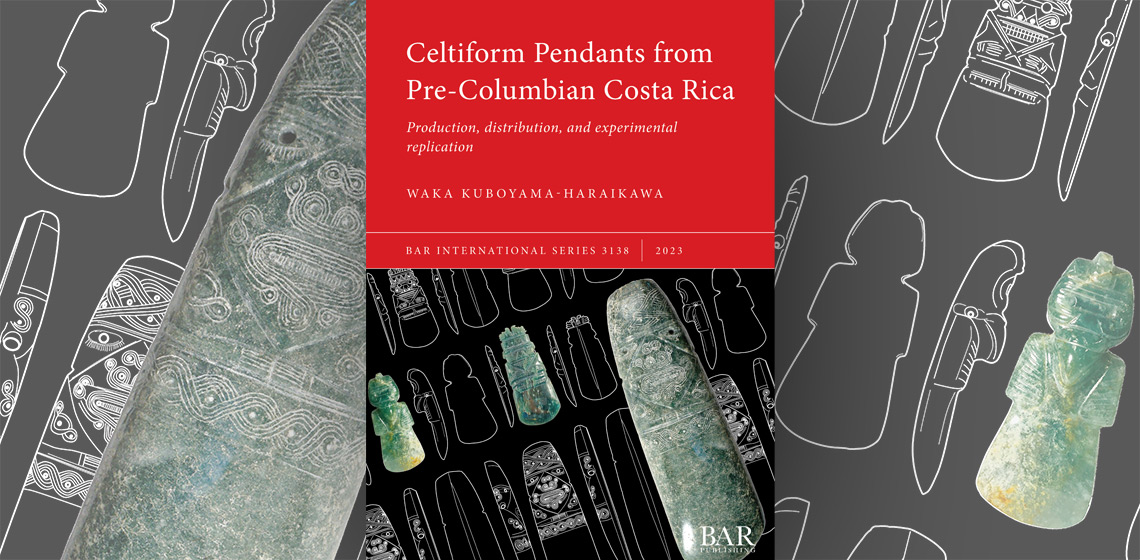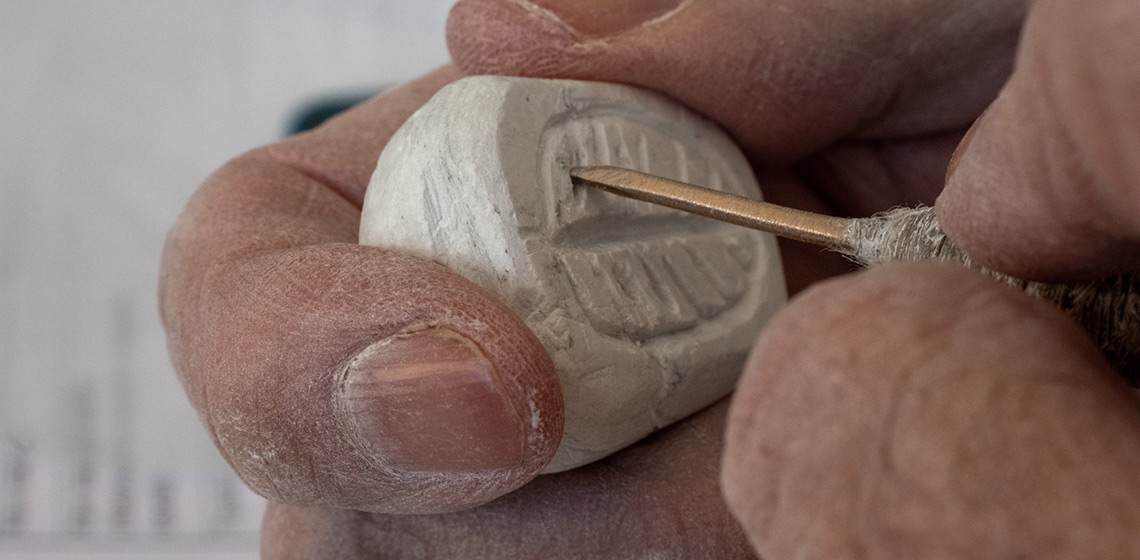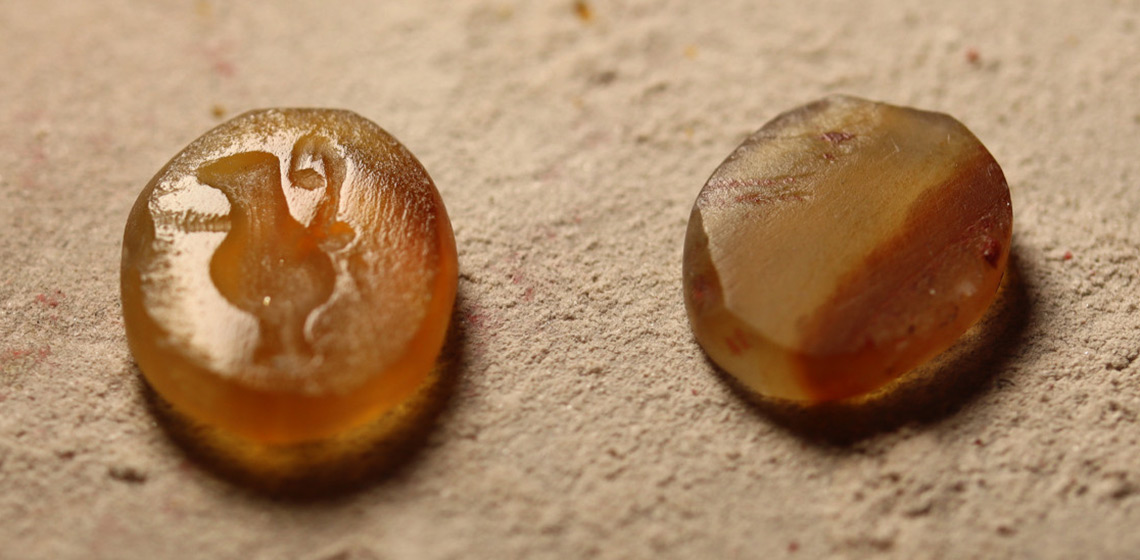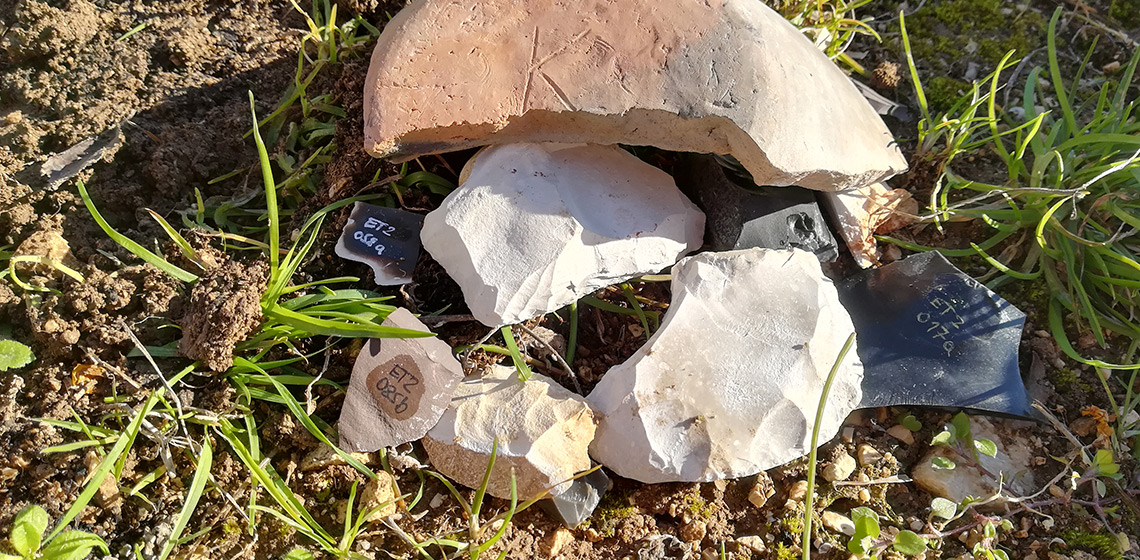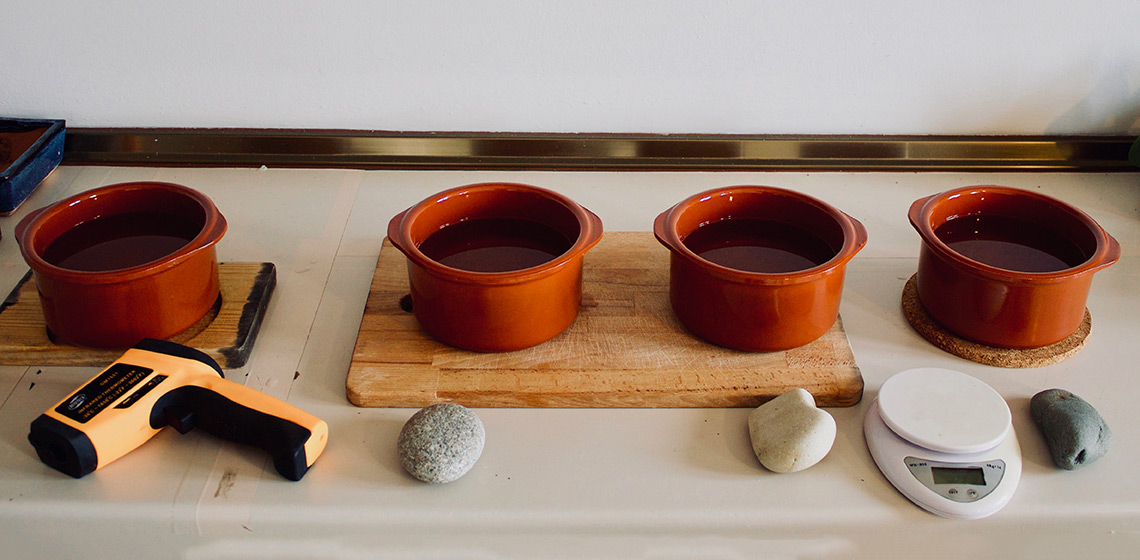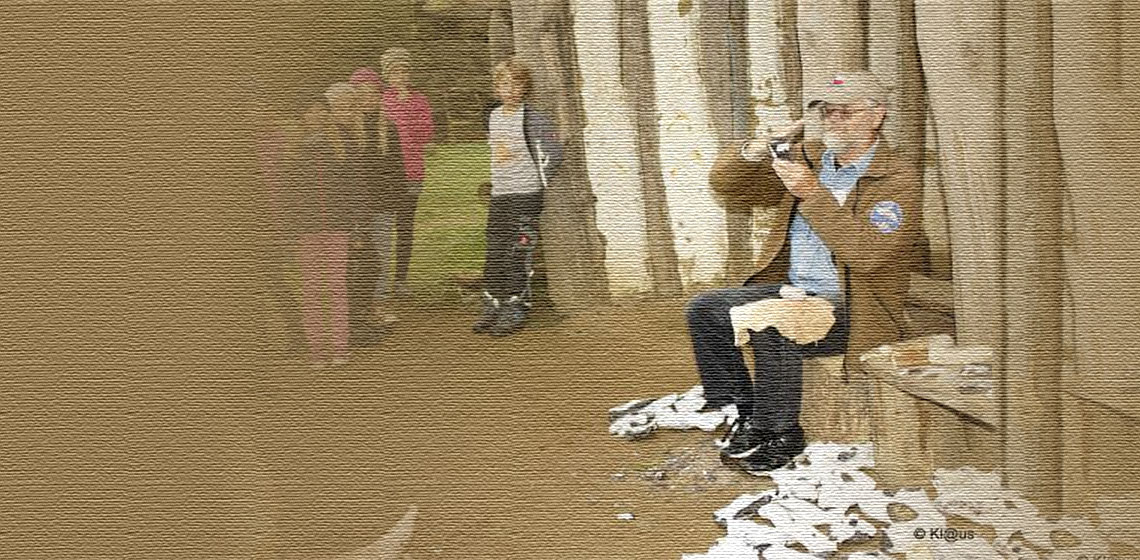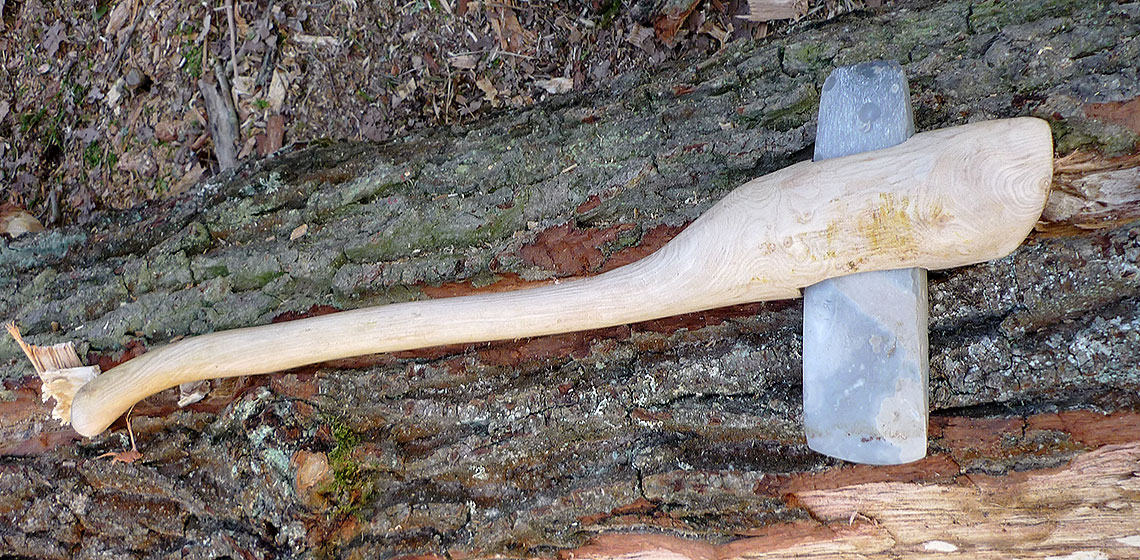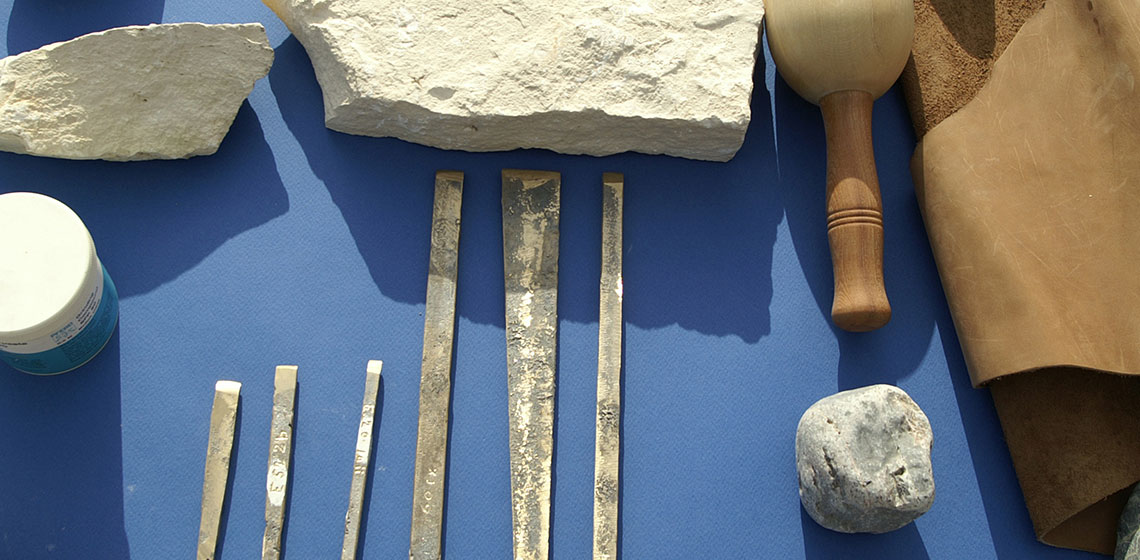stone working
Book Review: Celtiform Pendants of Pre-Columbian Costa Rica: Production, distribution, and experimental replication by Waka Kuboyama-Haraikawa
Publication Date
In her book, Celtiform Pendants of Pre-Columbian Costa Rica: Production, distribution, and experimental replication, Waka Kuboyama-Haraikawa seeks to highlight lapidary technologies in Costa Rica by examining the social application and production of celtiform pendants. Haraikawa is a PhD research fellow for the Center for Northeast Asian Studies...
Leave your Stamp: Reconstruction of the Scarab Production Chain
Publication Date
Scarabs are beetle-shaped seals originating in Egypt during the third millennium BC. They were first imported into the southern Levant during the early second millennium BC (Middle Bronze Age I), leading to a flourishing of local production in the following centuries...
The Career of an Orange Stone
Publication Date
The analysis of archaeological works of art involves their formal, thematic and interpretative description. The importance of these stages rests in their potential to reveal the biography of an artefact. Research methods investigating the production technology behind an object are a valuable factor extending the field of interpretation of a given object. Each finished work is the result of a creative process...
Enhancing the Accuracy of Use Interpretation: The Discovery of a New Wear Formation with the Complementary Methods of Experimental Archaeology and Use-Wear Analysis
Publication Date
11th EAC Trento 2019
***Experimental archaeology and use-wear analysis are methods used together to understand aspects of an object’s life, such as manufacture and use. This paper demonstrates the benefits of analysing use-wear through experiments. It presents the results of experiments which were carried out to test the use of battle-axes and axe-hammers...
***Experimental archaeology and use-wear analysis are methods used together to understand aspects of an object’s life, such as manufacture and use. This paper demonstrates the benefits of analysing use-wear through experiments. It presents the results of experiments which were carried out to test the use of battle-axes and axe-hammers...
Trampling Experiments – A Contribution to the Pseudo-Retouch Issue
Publication Date
11th EAC Trento 2019
***Apart from human-made retouch, stone tools can also exhibit traces of damage caused by several post depositional processes, one of which is trampling. Edge damage provoked by trampling, be it of animal or human origin, is sometimes interpreted as human-made retouch ...
***Apart from human-made retouch, stone tools can also exhibit traces of damage caused by several post depositional processes, one of which is trampling. Edge damage provoked by trampling, be it of animal or human origin, is sometimes interpreted as human-made retouch ...
Barely Scratching the Surface: An Experimental Approach to Engraved Magdalenian Plaquettes
Publication Date
This paper investigates the creation, utilisation, and destruction of engraved Magdalenian plaquettes through the application of actualistic experimental replication. Archaeological evidence suggests that there is a relationship between plaquettes and hearth structures, as well as engraved depictions and the destruction of the plaquettes through heating. However, this relationship between fire and plaquettes...
Keep it in your own Backyard: New Experimental Perspectives on Domestic Iron Age Lithic Industries in the Northwestern Iberian Peninsula
Publication Date
11th EAC Trento 2019
***Both knapped and polished lithic industries have traditionally been given great regard within the archaeological studies of northwestern Iberian Peninsula, mostly focusing on their typologies and the materials used. However, this has not been the case with other stone objects, such as rolling stones, that tend to appear in...
***Both knapped and polished lithic industries have traditionally been given great regard within the archaeological studies of northwestern Iberian Peninsula, mostly focusing on their typologies and the materials used. However, this has not been the case with other stone objects, such as rolling stones, that tend to appear in...
Knapping Skill Assessment
Publication Date
OpenArch Dialogue with Skills Issue
***This article is derived from a presentation made by the senior author at the OpenArch Conference "Working with stones in European Pre- and Proto-history in theory and in practice" organised by the Archaeological-Ecological Centre Albersdorf (DE), 23-27 September, 2013.
***This article is derived from a presentation made by the senior author at the OpenArch Conference "Working with stones in European Pre- and Proto-history in theory and in practice" organised by the Archaeological-Ecological Centre Albersdorf (DE), 23-27 September, 2013.
Field Trials in Neolithic Woodworking – (Re)Learning to Use Early Neolithic Stone Adzes
Publication Date
OpenArch Dialogue with Skills Issue
***Excavations of several Early Neolithic wells with excellent preservation of the wooden lining in the past years have made clear that Stone Age woodworking already attained a very high level of perfection. This poses the question how it was possible to execute this type of work with the means available at that time...
***Excavations of several Early Neolithic wells with excellent preservation of the wooden lining in the past years have made clear that Stone Age woodworking already attained a very high level of perfection. This poses the question how it was possible to execute this type of work with the means available at that time...
To Use or Not to Use a Minoan Chisel? Ancient Technology in a New Light
Publication Date
7th UK EA Conference Cardiff 2013
***The Minoan chisel is thought to have been used by the metal worker, the stone mason, the sculptor, the carpenter, and the ivory and bone worker. However, barely any work has been conducted to substantiate the different workers and their chisels...
***The Minoan chisel is thought to have been used by the metal worker, the stone mason, the sculptor, the carpenter, and the ivory and bone worker. However, barely any work has been conducted to substantiate the different workers and their chisels...

